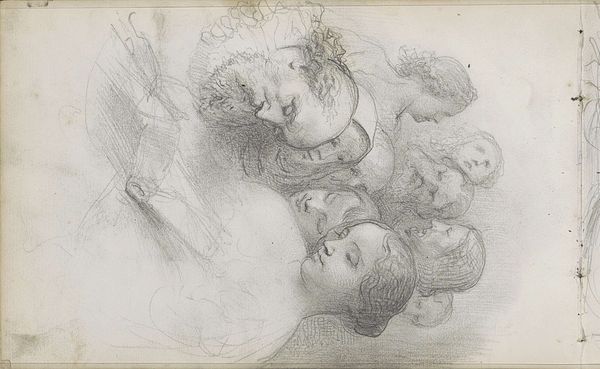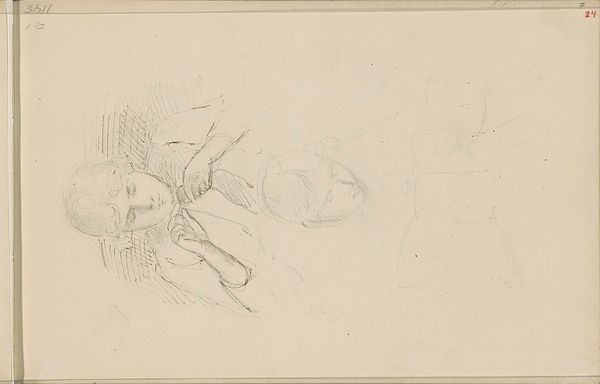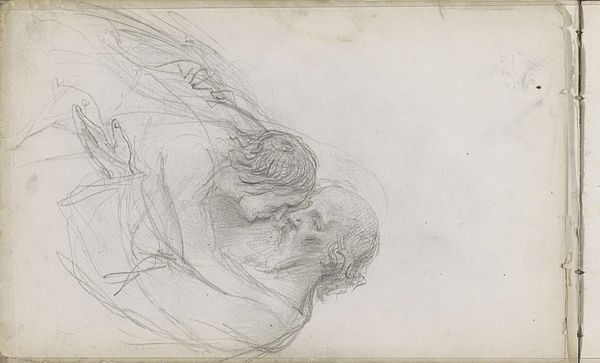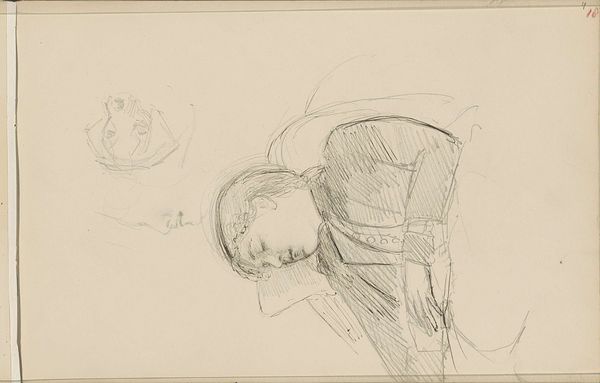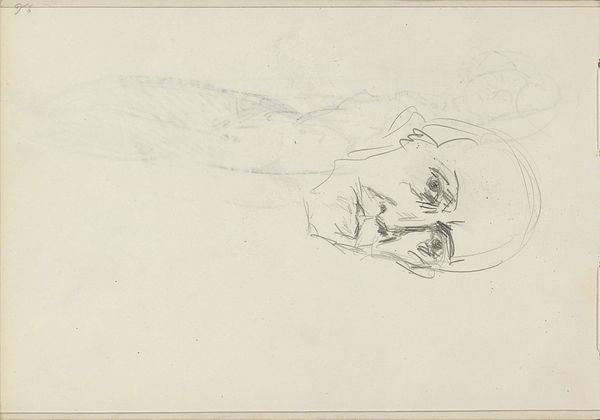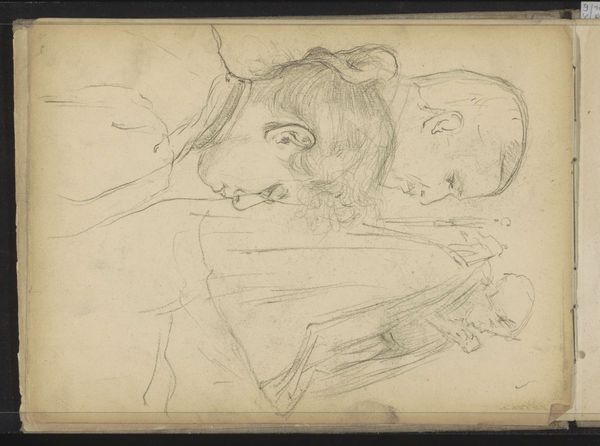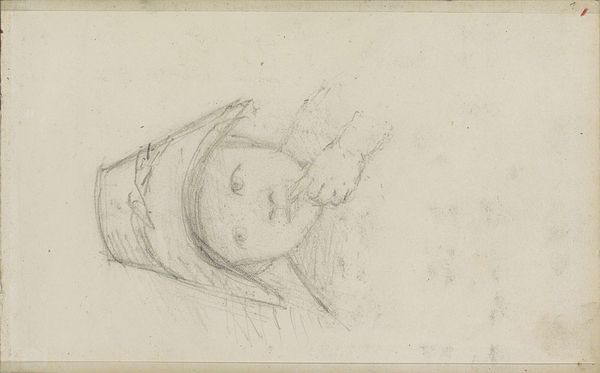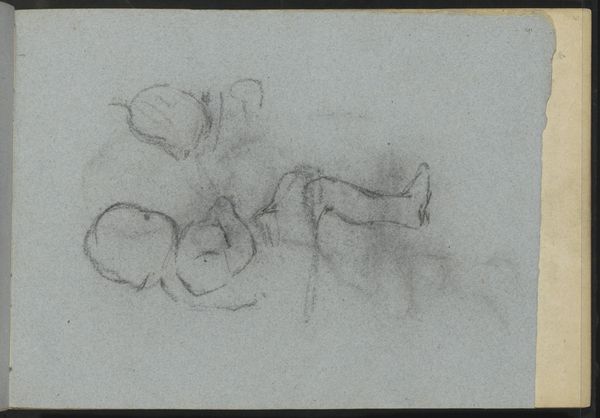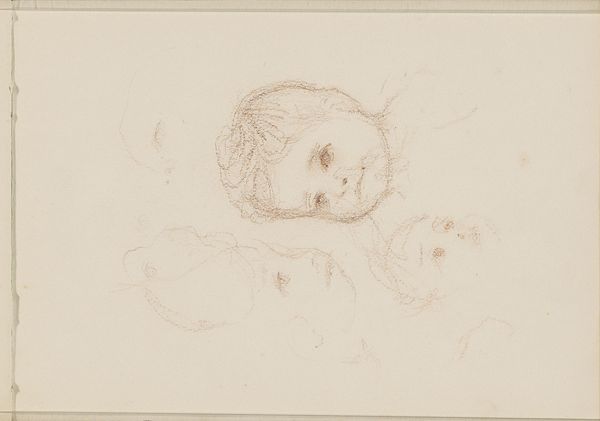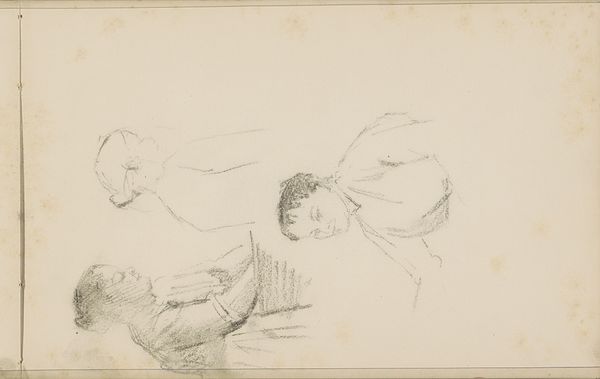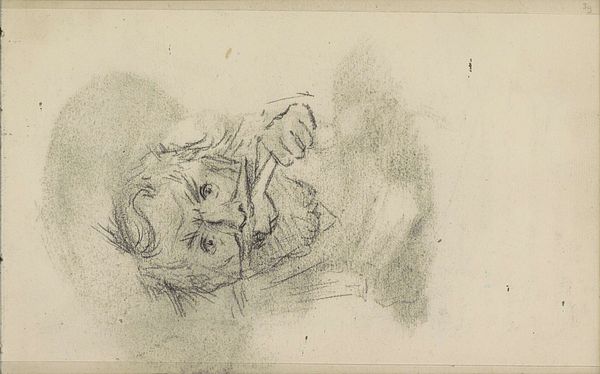
Vrouw, mogelijk een engel, buigend over twee ineengedoken vrouwen c. 1858
0:00
0:00
bastiaandepoorter
Rijksmuseum
drawing, pencil
#
portrait
#
drawing
#
figuration
#
pencil drawing
#
pencil
#
academic-art
#
realism
Copyright: Rijks Museum: Open Domain
Curator: This evocative drawing at the Rijksmuseum, dating from around 1858, is titled "Woman, possibly an angel, leaning over two huddled women." It's rendered in pencil, a medium allowing for delicate nuances of light and shadow. Editor: The immediate feeling I get is one of deep sorrow. The figures seem caught in a moment of intense vulnerability, almost as if frozen in time. The soft pencil strokes enhance that ethereal, dreamlike quality. Curator: The artist, Bastiaan de Poorter, places the scene in an ambiguous space, absent of specific historical or social markers, yet it resonates with the broader artistic interest in representing suffering and solace during that era. De Poorter lived during the time of social upheavals, it makes sense to imagine an underlying commentary on those in need and others willing to help. Editor: The kneeling woman's form arches protectively, her head lowered, echoing traditional depictions of guardian angels or mourning figures in religious art. The huddled figures also communicate distress and the human need to find solace in the company of each other. It strikes me as an archetype rather than any specific social situation. Curator: Precisely! The composition subtly directs our gaze, not only focusing on individual hardship, but towards ideas about societal duties of empathy. Exhibitions and salons were key to debates around how empathy and compassion were shaped by art. Images of poverty and suffering often had a role in the political debate. Editor: Is it also a symbolic comment on gender roles? It looks as though De Poorter depicts all women to be sufferers, caretakers, or guardian angels. Or, do you feel the angelic figure has other meanings and interpretations? Curator: I think this piece reflects more of the academic focus on form rather than strict societal messaging. It is possible that the angel-like character references Biblical narratives, but what comes forward most vividly for me is his dedication to capturing emotion during an historical and politically-charged period. Editor: I can see that the academic technique combined with universal symbol contributes to a complex, timeless piece. The symbolism employed serves to magnify, personalize, and amplify emotions on multiple levels. Curator: Yes. What seemed to resonate with contemporary audiences would’ve been its aesthetic interpretation that created accessible messaging appealing to collective consciousness in culture. Editor: Looking again, it's remarkable how a simple medium like pencil can convey such depth of feeling and cultural meaning. Curator: Indeed. This work reminds us how even seemingly simple artworks can offer profound insights into both art history and the cultural symbolism deeply ingrained within the collective human experience.
Comments
No comments
Be the first to comment and join the conversation on the ultimate creative platform.
